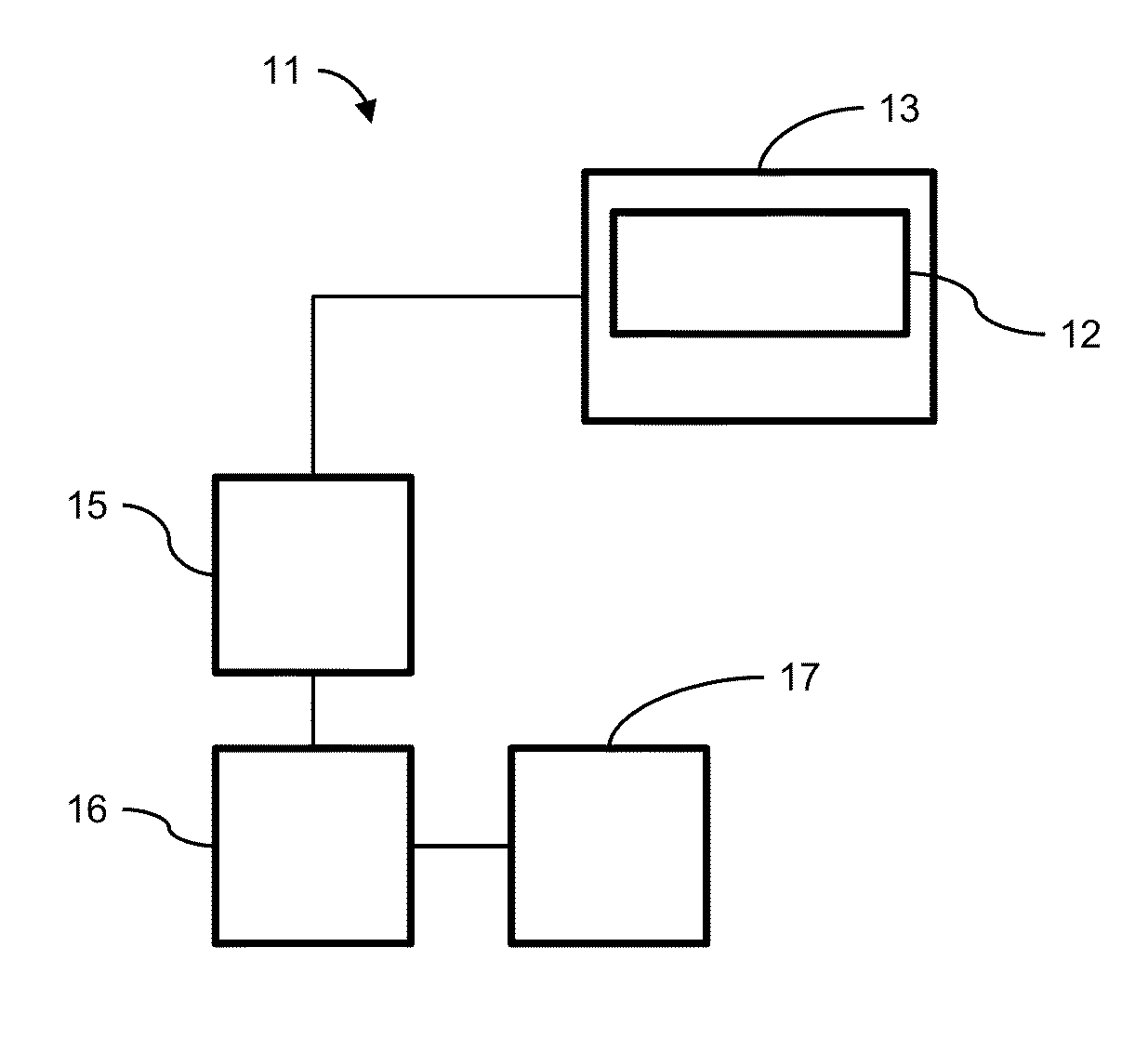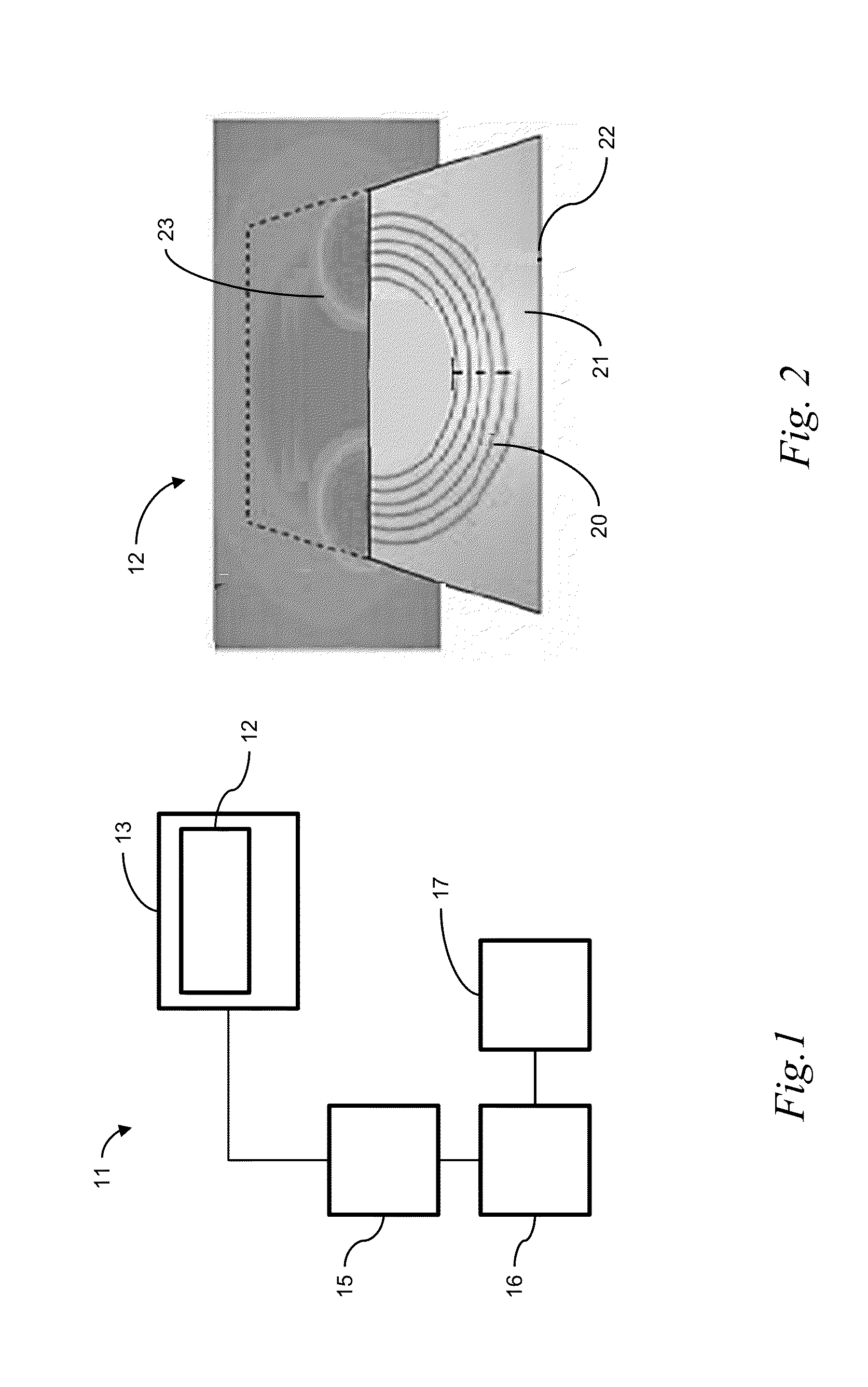Sensor Systems for Measuring an Interface Level in a Multi-Phase Fluid Composition
a multi-phase fluid composition and interface level technology, applied in the field of sensors, can solve the problems of high cost, high sensor cost, and high user cost, and achieve the effects of low cost, favorable signal-to-noise ratio, and high sensitivity
- Summary
- Abstract
- Description
- Claims
- Application Information
AI Technical Summary
Benefits of technology
Problems solved by technology
Method used
Image
Examples
example 1
[0065]In the case of the three-dimensional resonant transducer 31 disposed on a try-line or swing arm sampling assembly 13, different compositions of oil and water were poured into a sample cell with the three-dimensional resonant transducer 31 wound around the outside of the sample cell. FIG. 13 shows the try-line / swing arm response in terms of Fp (frequency shift of the real impedance) as oil concentration increases. The calculated detection limit of the composition of oil in oil-in-water emulsions (FIG. 13 part A) is 0.28% and of oil in water-in-oil emulsions (FIG. 13 part B) is 0.58%.
example 2
[0066]In the case of the two-dimensional resonant transducer 25, the two-dimensional resonant transducer 25 was immersed in different compositions of oil and water. FIG. 14 shows the response of a two-dimensional resonant transducer 25 (2 cm circular) in terms of Fp (frequency shift of the real impedance) as oil concentration increases. The calculated detection limit of the composition of oil in oil-in-water emulsions (FIG. 14 part A) is 0.089% and of oil in water-in-oil emulsions (FIG. 14 part B) is 0.044%. This example illustrates that small concentrations of one fluid mixed large concentrations of another fluid can be measured with a high degree of accuracy.
example 3
[0067]The model system was loaded with 250 mL of mineral oil and treated with detergent at a concentration of 1 drop per 50 mL (5 drops). The mineral oil was stirred and injected through the sensor and the impedance spectra are recorded. Small additions of water were added with constant salinity and same detergent treatment. After the water volume exceeded 66% or 500 mL of water, the system was cleaned and the experiment is repeated with different salinity waters. The multivariate response of the two-dimensional resonant transducer 25 was sensitive to changes in composition and conductivity at all levels in the test vessel of the model system. Although the effect of conductivity and composition are somewhat convoluted, the fact that the sensor monitors a composition gradient allows the data analysis procedure to deconvolute these effects.
[0068]FIG. 15 is a generalized process diagram illustrating a method 261 for determining the composition of an oil and water mixture as a function ...
PUM
| Property | Measurement | Unit |
|---|---|---|
| depth | aaaaa | aaaaa |
| thickness | aaaaa | aaaaa |
| operating temperatures | aaaaa | aaaaa |
Abstract
Description
Claims
Application Information
 Login to View More
Login to View More - R&D
- Intellectual Property
- Life Sciences
- Materials
- Tech Scout
- Unparalleled Data Quality
- Higher Quality Content
- 60% Fewer Hallucinations
Browse by: Latest US Patents, China's latest patents, Technical Efficacy Thesaurus, Application Domain, Technology Topic, Popular Technical Reports.
© 2025 PatSnap. All rights reserved.Legal|Privacy policy|Modern Slavery Act Transparency Statement|Sitemap|About US| Contact US: help@patsnap.com



